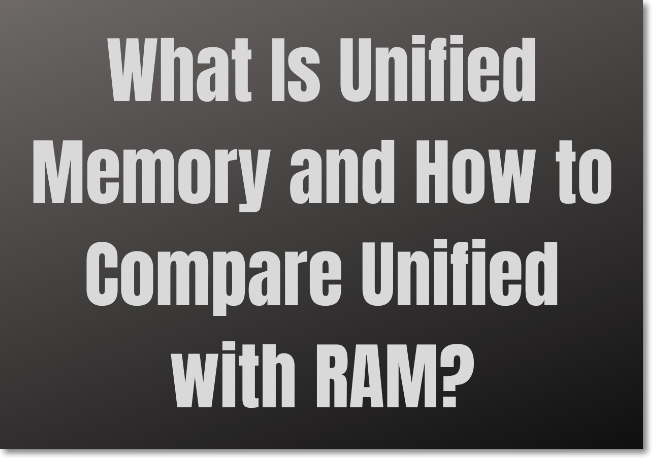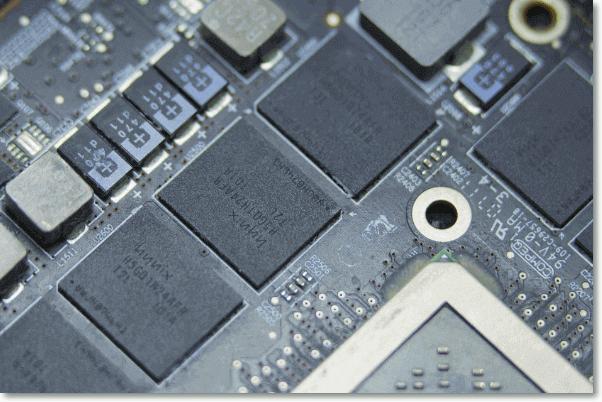Unified memory is a virtual address space that can be shared between the operating system and applications. More importantly, it has the potential to become a new paradigm in data storage. The main difference between unified and RAM is that unified memory is persistent, and RAM is temporary. To understand better what unified memory is and how to compare it with Ram, you need to understand the following example: In unified memory, you can access the content across multiple applications simultaneously, whereas, in RAM, you cannot.

What Is Unified Memory?
Know more about unified memory and how it could be helpful for you.

Definition: It's a type of memory throughout every operating system, such as Windows, Linux, and Macintosh. Besides, The unified memory enables programs to access any data created or modified by any program while running.
Functions: Unified Memory functions with the same storage, processing power, and graphics to process all types of data from audio, video, text, and photos, to name a few.
As a result, a smartphone user can easily open up a picture, record some audio, search the Web, and play games all with one device. And that doesn't have to be just a dream: it's already been done!
Features:
- With Unified Memory, your apps share memory space instead of having separate areas for code, graphics, and data.
- In other words, memory in a smartphone is shared between apps. This is similar to how desktop computers work and why they are often faster than laptops.
- So, in a nutshell, Unified Memory makes it possible to have a more powerful device because there's not as much of a bottleneck.
Unified Memory vs RAM: How to Compare?
Unified Memory vs. RAM:
The unified memory is similar to RAM but has only one memory location. So there is no problem with that. However, there is another confusion related to this. If we talk about unified memory, it means all the RAMs' total storage space is available in one location. So it has some similarities with RAMs but also some differences.
Similarities:
- Now let's discover how Unified memory and RAM are similar:
- They both can keep multiple data structures active at the same time.
- However, Unified memory can handle objects of any size while RAM is restricted to 4 KB of data.
- The performance of both is excellent.
Comparison By Features:
| Comparison | Features |
|---|---|
| Volatile or Not? | Unified memory isn't volatile, whereas the Ram is. |
| CPU/GPU Access or Not | Unified memory can access both the CPU/GPU. Meanwhile, the Ram serves the CPU or GPU. |
| Capacity | Ram is only short-term data, whereas unified memory can store long-term data. |
| Speed | Unified memory increases speed as compared to Ram. |
Conclusion
Unified memory is a new type of computer memory similar to RAM but much faster and more cost effective than traditional DRAM. Unified memory has been around since 2002, but it's only recently become more affordable and available. For most home users, it's best to stick with RAM because it's far less expensive than unified.
FAQs
1. Is 8 GB of unified memory enough?
Well, It highly depends on your work, and if you're having a team then 8 GB of unified memory will not be enough for you.
2. Is there a big difference between 16 GB of RAM and 32GB?
Sure there is! To explain, you need to understand the difference between RAM (Random Access Memory) and the amount of data it holds. RAM is the "storage" space of your computer where your computer stores programs and files.
The more RAM you have, the faster you can run programs. When you purchase a new PC, you're usually looking at purchasing RAM, but if you already have a laptop or desktop, it might be worth upgrading to more RAM.
3. Is it better to have more sticks of RAM or less?
When it comes to choosing between having a lot of RAM or having less, the answer will depend on how critical the system is to the user's daily workflow. For most people, a couple of hundred MB of RAM should be plenty. However, a few users rely heavily on programs like Photoshop or Maya, and they may need more RAM than that just to run smoothly.
These applications often cause computer systems to use up RAM without our knowledge, so it's crucial to have a large amount available in case of system instability.
On the other hand, if you're a casual blogger, you likely don't need to worry too much about having 4 GB of RAM for your web browser.
Was This Page Helpful?
Daisy is the Senior editor of the writing team for EaseUS. She has been working at EaseUS for over ten years, starting as a technical writer and moving on to being a team leader of the content group. As a professional author for over ten years, she writes a lot to help people overcome their tech troubles.
Written by Tracy King
Tracy became a member of the EaseUS content team in 2013. Being a technical writer for over 10 years, she is enthusiastic about sharing tips to assist readers in resolving complex issues in disk management, file transfer, PC & Mac performance optimization, etc., like an expert.
Related Articles
-
What Is SSD TBW and How to Check TBW on SSD
 Daisy/2024-01-11
Daisy/2024-01-11 -
What Is the $WinREAgent Folder and Can I Delete It from My Computer?
 Daisy/2024-01-11
Daisy/2024-01-11 -
Plist File on Windows: What Is It and How To Open It? [2024 HOT]
 Tracy King/2024-01-11
Tracy King/2024-01-11 -
M2 Pro vs M2 Max | Price, Battery Life, CPU, and GPU
 Brithny/2024-10-25
Brithny/2024-10-25
